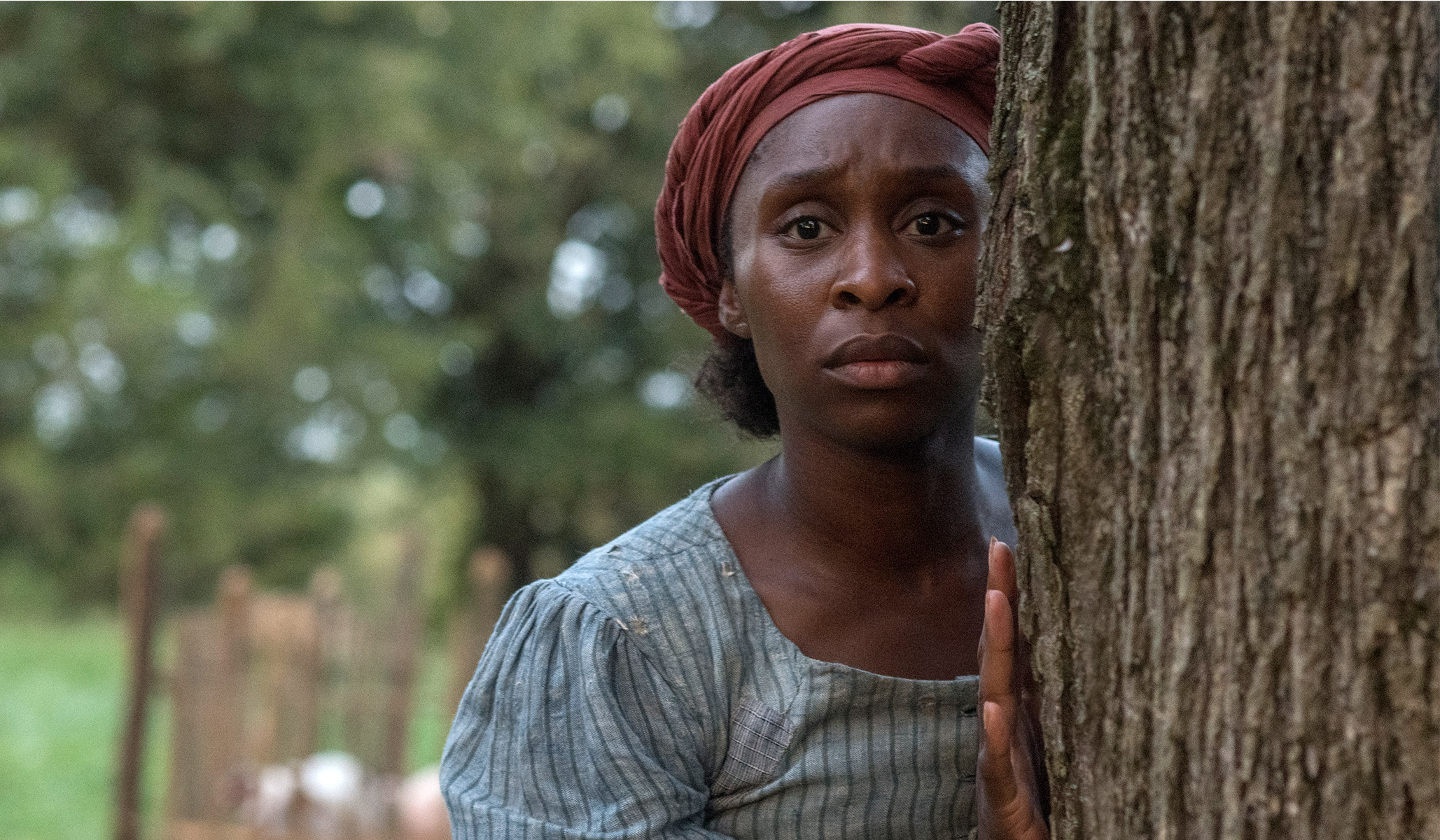“We need a badass black woman superhero to break down what’s real,” filmmaker and Tisch professor Kasi Lemmons said this month after a screening of Harriet. The director behind the new biographical drama, which opened November 1 and just eclipsed $40M at the box office, found her superhero in the titular protagonist Harriet Tubman (Cynthia Erivo) and her service to the Underground Railroad. For those whose intimacy with the historic abolitionist is lost to dusty textbooks past, Lemmons’ revival of Tubman is indeed sorely needed. With Harriet, she injects a century-old epic with modern pizazz and elevates one of history’s more unlikely legends to superhero status.
In terms of convention and form, Harriet finds itself well within the technical framework of the biopic genre, owing much of its visual polish to veteran craftsman and DP John Toll. Lemmons and co-writer Gregory Allen Howard treat Tubman’s life and work with an exacting precision that peels back the layers of a woman whose ferocity and vision is the stuff of legend. And that’s the thing: the mythology of Harriet Tubman is not myth at all.
Lemmons stuck around after the screening at Cantor Film Center where she spoke with Grad Film Chair Barbara Schock about what turned out to be an uncompromising research process, and how the climate in today’s America (and a certain rapper who became a thorn in her side) motivated and pushed her team through the trying days working on Harriet.
Here are some of our favorite takeaways.
On researching the life and work of Harriet Tubman
“I did months and months of research. I read everything. Every major biography, every scholarly work, everything on the Underground Railroad–William Still’s Underground Railroad, every slave narrative I could find...
“[Harriet] would do a one-woman show to raise money for the Underground Railroad, and later for John Brown. And in that [show] there were certain things that she would say, so you would get a little hint of how she spoke.”
On why she focused on family separation and psychological trauma in the film
“Family separation was on my mind—it was in the news and it was on my mind. There was something moving about her story and that she was motivated by her family and by love. I didn’t really know that. I didn’t know that she went back to get her family. The rest of it was more incidental, and then of course she takes up this mission.”
“[Harriet] is motivated to go get her family. She goes and begs her sister, and her sister won’t leave her children because they’ve hidden her children from her. That was the way they controlled enslaved people. This was also [in response] to Kanye and this whole idea that some people chose to stay in slavery. The main reason people did not choose to runaway—of course they were often maimed, killed, put in cages by the side of the road, but that’s not the main reason. The main reason was because they had families, and they didn’t want to leave their families.”
On the challenges of working on historical subject matter with such emotional weight
“I have been telling stories for and about African-Americans for my whole career. I’ve become a little bit of a scholar on African-American history, which is a lot. And it can be kind of… depressing. But it can also be incredibly inspiring.
“I cried every day. Me and my production designer cried every day, because the research is heavy. On the other hand, the ingenuity of African-American people—that different lyrics in these spirituals were a coded language that white slave masters [couldn’t understand]. They were communicating this amazing language. By the change of verse, by the intonations, Harriet could say, ‘I’m here, come now,’ ‘I’m here, not yet, come later.’ I get incredibly inspired by that.”
On realizing that lead actress Cynthia Erivo was a perfect fit for the role of Harriet
“Cynthia walked into that restaurant where we were meeting, Russian Tearoom, which was empty, and I could see it. I could see it in her physicality, her muscularity—they’re the same height. She’s a marathoner, she’s a singer. But more than that, she’s got a fierceness that reminded me of Harriet. I sat down and looked into her eyes and I’m like, I think this British woman—a West African like Harriet, but a British woman—has got the soul and spirit and fire to do this.
“The tapestry of African-Americans is what I was really trying to show. From the obvious and very heroic and almost in-touch with God, and all these wonderful heroes of the underground railroad, to the ordinary heroes like reverend Green and [Harriet’s] father.”
